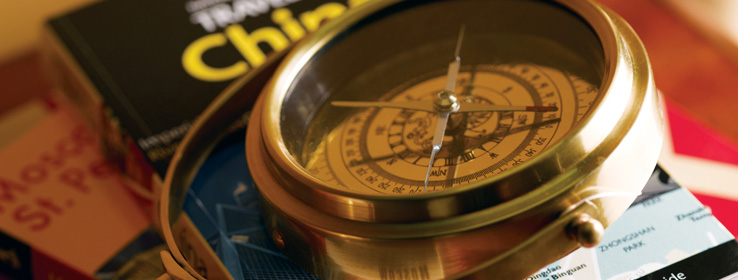When architect Amy Kim sees a building design with color integrated in a meaningful or decorative way that "works," it gets her excited.
While some believe the modern movement in architecture completely eradicated the use of color, it isn't entirely true. Rather, architects of the era used planes of color to complement the white interior and exterior walls that most people are familiar with. However, because many of the photos from that time are black and white, the effect goes wholly unappreciated. So, when I see color integrated in a building design in a meaningful or decorative way that makes it "work," I get excited.
A couple of months ago, the front cover of Architectural Record caught my eye. It featured Steven Holl's Linked Hybrid, a new housing complex in Beijing. What drew me in were the colored undersides of the sky bridges, or "sky loops," that connect the eight towers. They seem to signify these habitable bridges as "hotspots" to the pedestrian below. He also applied color on the window header and jambs, just as he had done on Simmons Hall at M.I.T., where he introduced color on the window soffits. And while the color pattern might seem random, the very opposite is the case. Holl took the colors found in "polychromatic Buddhist temples" and "used the I Ching to determine the pattern." This bit of information – that meaning exists behind the seemingly arbitrary – really thrilled me. Holl's application of colors may not be bold enough for some, but I'm guessing it doesn't seem too overwhelming from the perspective of a pedestrian or apartment dweller. Is it enough to make the complex approachable and inviting? This I cannot answer, but in theory, the colors seem to work.
There is a building by Legorreta+Legorreta – I have walked by it every day for the past three or so years – at UCSF's Mission Bay campus here in San Francisco. Color is certainly an integral architectural element of this building. It is swathed in a rich brownish-red hue, and the main atrium is awash in a deep blue – nothing too alarming. But there is a pink patio – a hotspot, if you will – located on an upper floor at the front of the building. The pink intrigues me; it is like a beacon amid all the beige and gray buildings. My eye is drawn to it every time I walk by and I stare at it expecting something to happen, but nothing ever does. Turns out that the patio belongs to the university's administrative offices and, alas, often goes unused – an outdoor party room gone to waste. Tsk. Color can certainly enhance a building, but it shouldn't be slapped on just for the sake of using color.
Regretfully, sometimes color can transform an innocent building into an eyesore rather than an icon. For example, there are a couple of residences here in the Bay Area – one incorporates a baby pastel color scheme, and the other, featured on the Curbed SF Web site, is cast in full Technicolor glory!
Share with me architectural examples where you think color has been used with thoughtful and intentional consideration.





